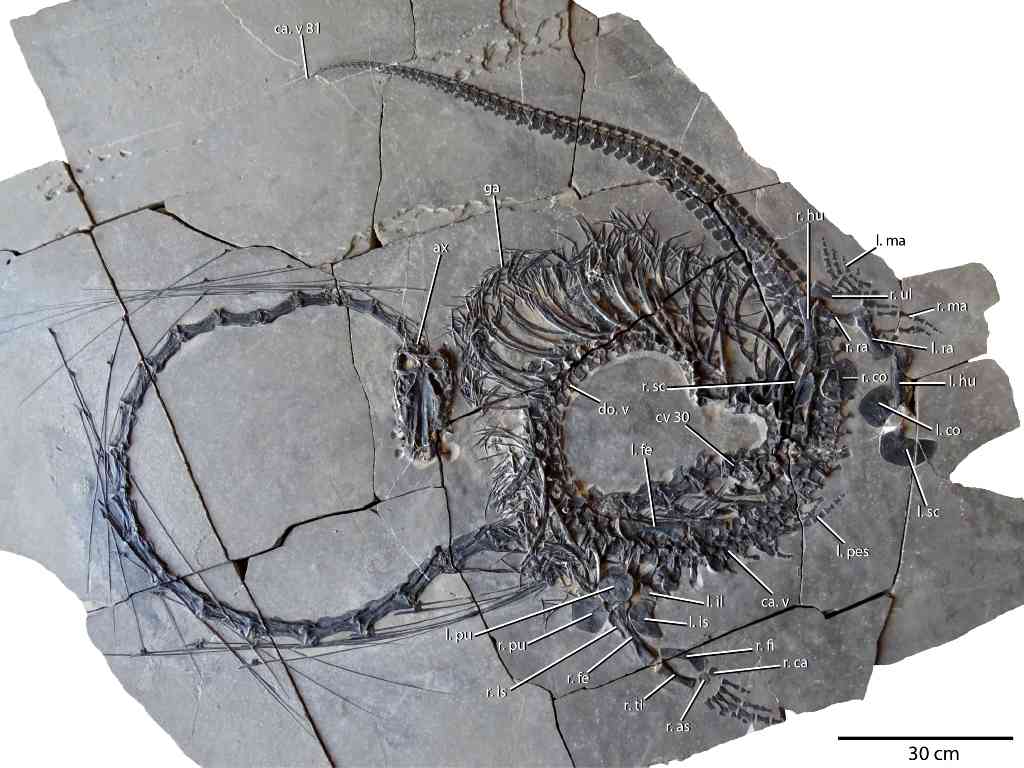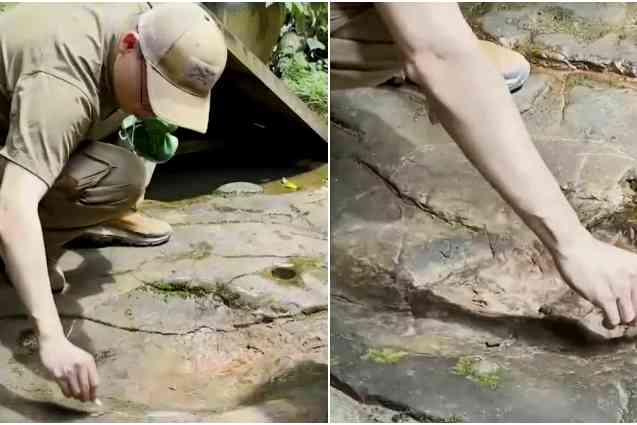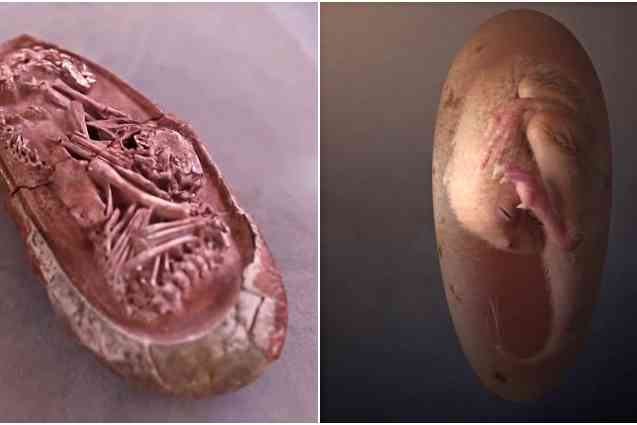240-million-year-old ‘Chinese dragon’ fossil discovered in southern China



By Carl Samson
February 23, 2024
A team of international scientists has published new details about an ancient reptile with an appearance reminiscent of the mythical Chinese dragon.
Driving the news: The aquatic reptile, known as Dinocephalosaurus orientalis, was first identified in 2003 after its skull was discovered in southern China’s Guizhou province. This time, scientists found new fossils that lead to a fuller picture of the mysterious sea creature.
What it looks like: Dinocephalosaurus orientalis, which lived in China’s Triassic period some 240 million years ago, was 5 meters (16.4 feet) long and had a characteristic long neck made of 32 separate vertebrae. Its skull had a “fish-trap type of dentition” similar to that of another reptile — Tanystropheus hydroides — but having more vertebrae in the neck and torso gave it a more snake-like appearance.
The new fossils include a skull, ribs, limbs and vertebrae “preserved in perfect articulation.” The scientists also found at least four fish in the abdomen, as well as small vertebrae or a limb bone of a reptile it had eaten.

What the researchers are saying: The team of scientists, who hail from China, Scotland, Germany and the U.S., emphasized the breakthrough in their recent discovery.
“This discovery allows us to see this remarkable long-necked animal in full for the very first time. It is yet one more example of the weird and wonderful world of the Triassic that continues to baffle palaeontologists,” said Dr. Nick Fraser FRSE, Keeper of Natural Sciences at National Museums Scotland. “We are certain that it will capture imaginations across the globe due to its striking appearance, reminiscent of the long and snake-like, mythical Chinese Dragon.”
Prof. Li Chun of the Institute of Vertebrate Palaeontology and Palaeoanthropology, part of the Chinese Academy of Sciences in Beijing, was the first person to discover the fossils back in 2003. He was visiting a village in Guizhou when he came across a vertebra in a slab of limestone.
He attributed their latest success to collaboration.
“This has been an international effort. Working together with colleagues from the United States of America, the United Kingdom and Europe, we used newly discovered specimens housed at the Chinese Academy of Sciences to build on our existing knowledge of this animal. Among all of the extraordinary finds we have made in the Triassic of Guizhou province, Dinocephalosaurus probably stands out as the most remarkable,” said Chun.
The new findings are published in the journal Earth and Environmental Science: Transactions of the Royal Society of Edinburgh.
Share this Article
Share this Article





